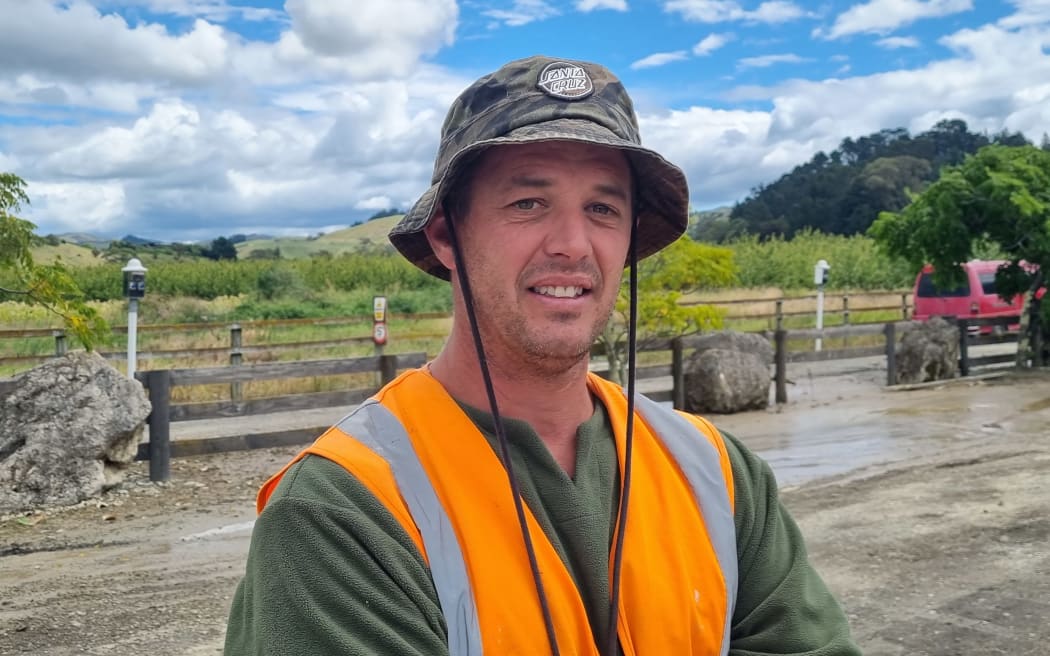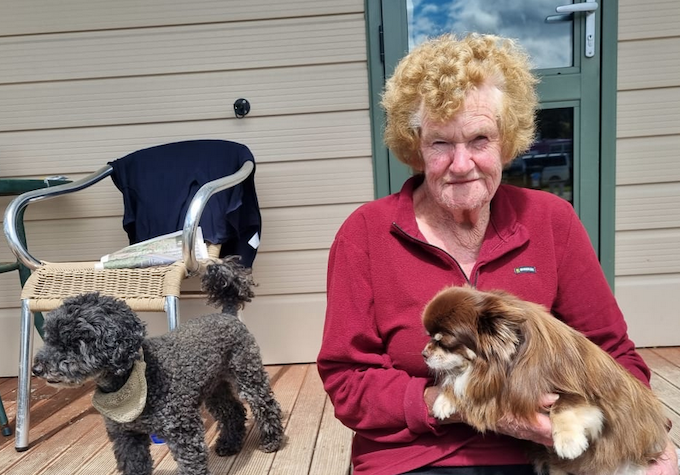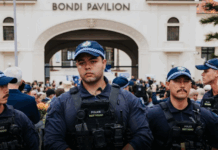By Tess Brunton, RNZ News reporter
The death toll from Cyclone Gabrielle in Aotearoa New Zealand is rising — now 9 — and many areas in Hawke’s Bay have been left as disaster zones with rescues, rather than recovery, still the focus.
Power, internet and phone service is still patchy for many people in the region making communication difficult.
Police are working to reconnect people with loved ones who have been reported missing.
- READ MORE: Cyclone Gabrielle triggers more destructive forestry ‘slash’ – NZ must change how it grows trees
- Other Cyclone Gabrielle reports
- Follow RNZ’s live news blog
Prime Minister Chris Hipkins was in Esk Valley on Friday — an area where homes were completely inundated with water.
Driving through Eskdale, the mud is thick and still water crosses the roads in places.
Debris is strewn across orchards, fields and fences. Parts of the road are washed away, there are dead animals, and cars are wedged against buildings.
A lone boat perches on the dross in a field.
Harrowing time
It was a harrowing time for Maureen Dorr who owns The Doggy Farmstay in Eskdale.
When the floodwaters hit her house, she had six dogs staying with them and three of her own.
“So John got one — a German shepherd — and put him in the laundry. We put another one in the bathroom — a rottweiler, and then we put four on the double bed, and then I held two of them above the pantry near the ceiling.
“They (the floodwaters) came right up to our neck, and then John smashed the kitchen window as the water below the windowsill was lower and let some of the water out.”
She spent 12 hours like this, because going outside was even worse.
Some of the dogs nearly drowned, but they managed to revive them.
An 82-year-old man in a ute found them on the road and asked them if they needed help.
Escaped the valley
They bundled the small dogs in a box and tied the larger dogs on the back, escaping the valley, and leaving behind a derelict home.
“There’s no way you could even get in the house for silt. The kitchen side of the house is just about gone, the wall’s just about out. The furniture’s all backed up inside it, and we had drawers coming down the hallway, leaning against the kitchen window.”
All of the dogs survived, and the six dogs staying at her kennels are with other families until they can be returned to their owners.
Dorr is staying in Bay View and said they were being well supported and her neighbours were OK — they were up to their waist in water before getting into the roof cavity and being evacuated.
She is insured, but thinking about the future is too hard right now.
Nearby, Bay View residents are banding together to check on and support those impacted in the Esk Valley.

Rowan Kyle was one of them.
‘An apocalypse basically’
“I’d call it an apocalypse basically … being local to the area, it’s just unrecognisable. There’s just cars upside down, stacked everywhere. It’s like a bomb has gone off.”
One of the new developments had been devastated, Kyle said.
“They’re filled to the brim with mud, silt. Yeah, they’ve just had it. They’re saying that there’s potential, they might just have to write them off completely.”
He did not understand why the NZ Defence Force had not been in to assist them, saying residents have been mostly left to organise, pick up the pieces, and “fudge their way through it”.

Prime Minister Hipkins was discouraging people from speculating over the death toll of Cyclone Gabrielle.
“It’s no good to anybody speculating about how many people have been injured or how many people may have died in this tragedy. We’ll certainly share that information as soon as we can.
‘Outlandish claims’
“But I’ve heard some outlandish claims out there at the moment that there is no evidence to support.”
The cyclone was the biggest natural disaster seen this century, he said.
Thirty-one thousand people in Napier, 6000 people in Hastings and 1000 people in Wairoa have been without power for four days.
Civil Defence in Hawke’s Bay said there are still thousands of people in hundreds of communities who have yet to be contacted.
Group Controller Ian Macdonald said there were too many uncontacted communities to list and they were prioritising those they suspected were worst affected by the flooding.
“There are literally tens and maybe hundreds of communities. Communities can be anything from a 1000 people in one community at the back of Rissington through to just tens of people or just a few people.”
Helicopters were delivering communication gear and emergency supplies to the worst affected communities, he said.
This article is republished under a community partnership agreement with RNZ.
Cyclone Gabrielle: Thousands uncontactable, hundreds still without water or power https://t.co/PBdQjQqtmq
— RNZ News (@rnz_news) February 17, 2023







































